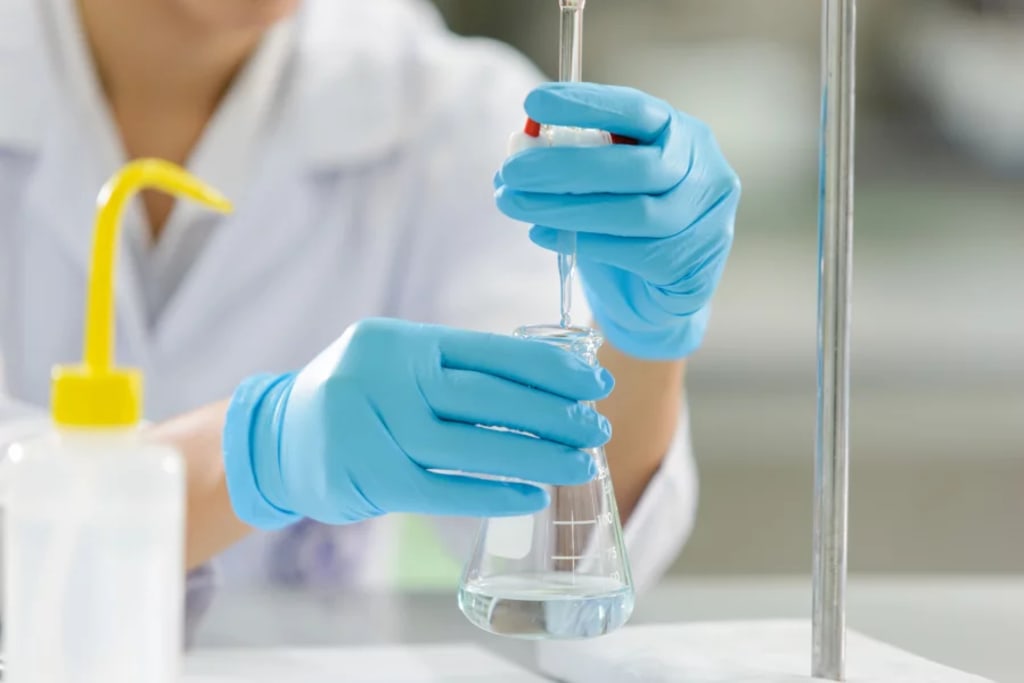Titration
Introduction, Principle, steps to proceed titration, titration methods and its applications.

Titration: A Crucial Analytical Chemistry Technique
Introduction
Titration is a common analytical chemistry method for figuring out how much of a drug is in a sample. A solution with a known concentration (the titrant) is gradually added to a solution with an unknown concentration (the analyte) until a chemical reaction between the two is complete. The amount of titrant needed to attain the reaction endpoint can be used to determine the analyte concentration. The titration procedure is described in general terms in this assignment, along with its principles, variations, and uses.
Principle of titration:
The principle of stoichiometry, which states that the reaction between the analyte and titrant takes place in a specific ratio, is the basis for titration. A balanced chemical equation for the reaction can be used to calculate the volume of necessary titrant and determine the unknown concentration. The reaction endpoint is often found by monitoring a physical parameter, such as conductivity or pH, or by employing an appropriate indicator.
Steps to proceed titration
The process of titration typically involves the following steps:
Preparation of the Analyte: The analyte solution is prepared by accurately measuring a certain volume of the sample and transferring it to a clean and dry titration flask or beaker.
Selection of Titrant and Indicator: The appropriate titrant is selected based on the nature of the analyte and the reaction involved. An indicator may also be chosen to signal the endpoint of the titration. Indicators change color at a specific pH or when a certain stoichiometric ratio is reached.
Performing the Titration: The titrant solution is slowly added to the analyte solution using a burette, which allows precise control over the volume added. The titrant is added in small increments while continuously swirling in a mixture.
Detection of the Endpoint: The analyte and titrant response must be complete for the endpoint of the titration to be reached. Depending on the type of titration, multiple techniques can be used to detect it. Observing a colour change in the solution (with indicators), checking the pH with a pH metre, or noticing a change in conductivity are typical techniques.
Gathering Information: The amount of titrant needed to attain the endpoint is gathered. Using stoichiometry and the known concentration of the titrant, this volume is utilised to determine the concentration of the analyte.
Titration Methods:
Acid-base titration is the process of neutralizing an acid by adding a base or vice versa. Titration of a strong acid (like hydrochloric acid) with a strong base (like sodium hydroxide) is the most typical example. Typically, an indicator like phenolphthalein or bromothymol blue is used to identify the endpoint.
Redox Titration: In redox titration, electrons are transferred from the analyte to the titrant. This kind of titration is used to figure out an element's level of oxidation or the quantity of a reducing or oxidising agent. Titrations of iodine with sodium thiosulfate and iron(II) with potassium permanganate are two examples.
Complexometric Titration: In complexometric titration, an analyte and a titrant that serves as a chelating agent form a complex. In complexometric titrations, ethylenediaminetetraacetic acid (EDTA) is a frequently employed chelating agent. This technique is used to identify metal ions in a sample, such as calcium or magnesium.
Precipitation Titration: When a titrant is added to the analyte solution, precipitation titration results in the production of a precipitate. When the precipitate has fully formed, the endpoint has been reached. An illustration of a precipitation titration is Mohr's technique, which uses silver nitrate to measure chloride ions.
Titration Applications
For the quality control of medications, titration is widely employed in pharmaceutical analyses. It is able to identify the active pharmaceutical compounds and other chemicals in a formulation as well as their identification, concentration, and purity.
Titration is essential to environmental analysis because it enables the identification of many parameters in water, soil, and air samples. Titration, for instance, can be used to gauge a substance's alkalinity, acidity, or level of dissolved oxygen.
1. Food and Beverage Industry: Wines, fruit juices, and dairy products are just a few examples of products where titration is used to determine the acidity or pH. The analysis of additives and preservatives is another use for it.
2. Titration is a key technique taught in chemistry labs to give students practical experience with volumetric analysis. It aids in the improvement of measurement precision, data processing, and comprehension of chemical processes.
Conclusion
Due to its variety and precision in estimating the concentration of chemicals in a sample, titration is a crucial analytical chemistry technique. Titration is a popular analytical chemistry method for figuring out how much of a material is in a solution. Until the reaction between the two is complete, a solution with a known concentration (the titrant) is added to a solution with an unknown concentration (the analyte).
It has numerous uses in many different industries, including pharmaceutical analysis.
About the Creator
Enjoyed the story? Support the Creator.
Subscribe for free to receive all their stories in your feed. You could also pledge your support or give them a one-off tip, letting them know you appreciate their work.





Comments
There are no comments for this story
Be the first to respond and start the conversation.